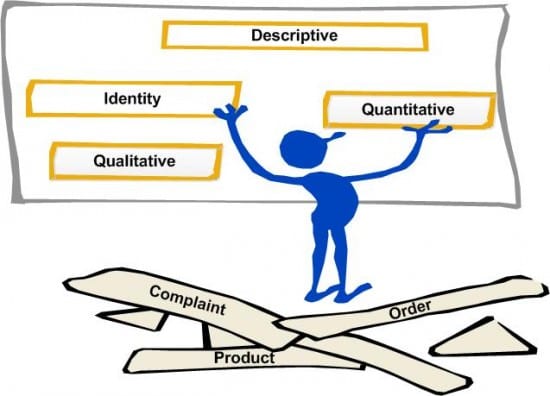AI to Streamline Customer Data
Leveraging AI to Streamline Customer Data Audits for Marketing
AI to Streamline Customer Data: In today’s world of ever-increasing data availability, volume, and variety, the challenge of knowing which data is valuable to you is a key step in starting to build a marketing solution. Often, the response is that ‘all data is important,’ which may be true, but deciding which elements are critical in the initial stages of building your solution requires a method to identify the value of each type of customer data.
This post explores how AI can enhance the auditing process of customer data based on its type and value. Through examples, we’ll show why it’s important to be selective when reviewing customer data in CRM and email marketing, emphasizing the transformative role AI can play. Over numerous implementations of Marketing Database solutions, AI can help effectively manage various data types, such as ‘pet’s name,’ ‘favorite color,’ and ‘number of car doors,’ each with potential value to different markets:
- Pet’s Name: Pet Supplies Retailer
- Favorite Color: Retail, particularly clothing
- Number of Car Doors—Motor Insurance Industry
When first considering each data element, the ability to classify it can help determine its value and which phase of a solution it should be delivered in, if at all. The following list provides examples of data elements and will help you quickly identify the critical pieces of information to your business and goals from various data sources. Typically, the priority order of the data is as follows:
1. Customer Identity Data
At the heart of database marketing is the individual. Knowing who the individual is and being able to build and maintain a single customer view provides the first type of data: identity. AI can automate the extraction and verification of identity data, including:
- Name Information: Title, First Name, Last Name, Designatory letters, etc.
- Person Information: Date of Birth, Gender, etc.
- Postal Address Information: Building Number, Address Lines, Town, Postal/Zip Code, Country, etc.
- Telephone Information: Home Telephone No., Work Telephone No., Mobile No., etc.
- Email Address Information: Personal Email Address, Work Email Address, etc.
- Social Network Information: Facebook Identifier, Twitter Address, LinkedIn Identifier, etc.
- Account Information: Details of your customer’s account IDs or user IDs.
- Job Information: Company Name, Department Name, Job Title, etc.
- Permission and Suppression Data: Information concerning permission to communicate and reasons for not communicating.
2. Quantitative Data
Once you understand who the individual is, the next key element is measurable operational data, which enables you to understand how your customer has behaved, transacted, or interacted with your business. AI can analyze patterns and predict future behaviors from:
- Transactional Information (Online and Offline): Number of products purchased, actual products purchased, Order/Subscription Value, Order/Renewal dates, product abandonments, Product Returns, etc.
- Communication Information (Inbound and Outbound): Communication date, channel, Opens, Click-throughs, etc.
- Online Activity: Website visits, product views, online registrations, etc.
- Social Network Activity: Facebook likes, Twitter interactions, etc.
- Customer Services Information: Complaint details, customer query details, etc.
3. Descriptive Data
Understanding who the individual is and the type of activities they complete with you provides a good starting point for any marketing database. To gain a fuller perspective of your customer, additional profile information is crucial. AI can profile customers more effectively by analyzing:
- Family Details: Marital status, number of children, age of children, etc.
- Lifestyle Details: Property type, car type, number of car doors, pet ownership, etc.
- Career Details: Profession, Education level, etc.
4. Qualitative Customer Data
The final type of data you will come across provides further descriptions of your customer and potential behavior, usually provided by questionnaire-type information where an attitude, motivation, and opinion are provided. AI can process and summarize qualitative data to extract meaningful insights.
- Attitudinal Information: How do you rate our customer service? How do you rate the value of the product? How likely are you to purchase our product again?
- Opinion: What is your favorite color? Where is your favorite holiday destination?
- Motivational: Why was the product purchased? What was the key reason for purchasing our product (locality, price, quality)?
Using this simple classification process and relating them to your core business goals will enable a quick identification of which data provides information critical to your business’s success. With AI, the process becomes even more efficient and insightful, helping you answer questions like ‘How valuable is knowing my customer’s pet name?’ for your business.
There you go! With AI, the process of auditing customer data becomes more streamlined and insightful, enabling businesses to make data-driven decisions more effectively.















